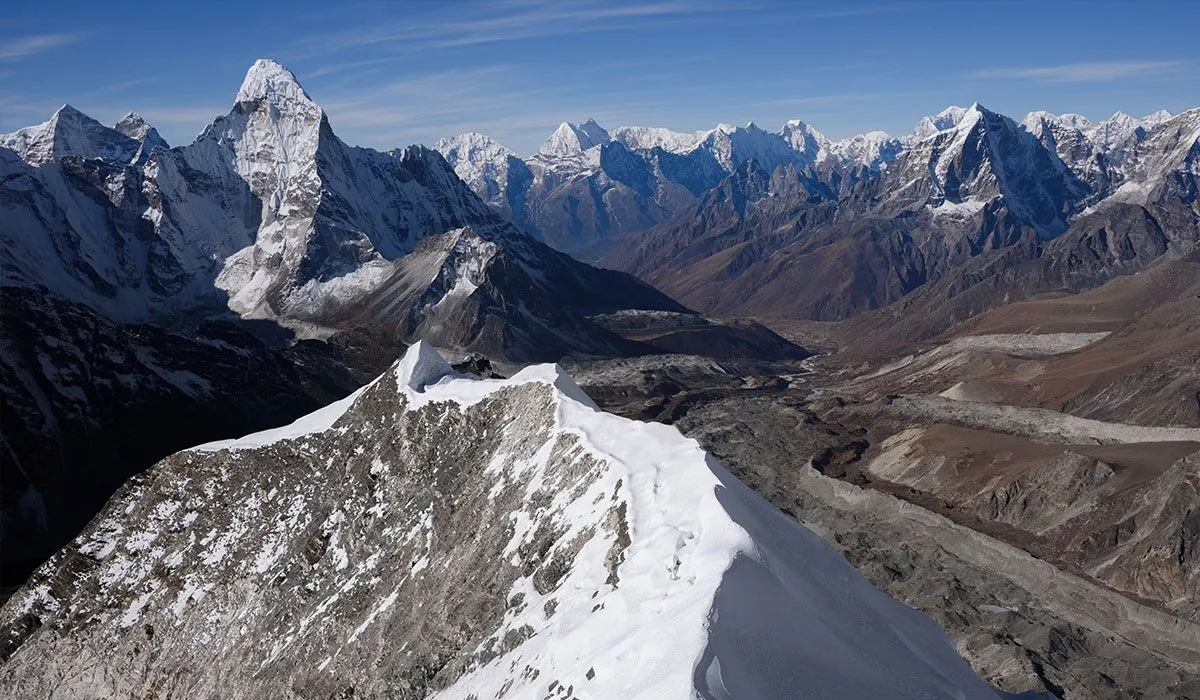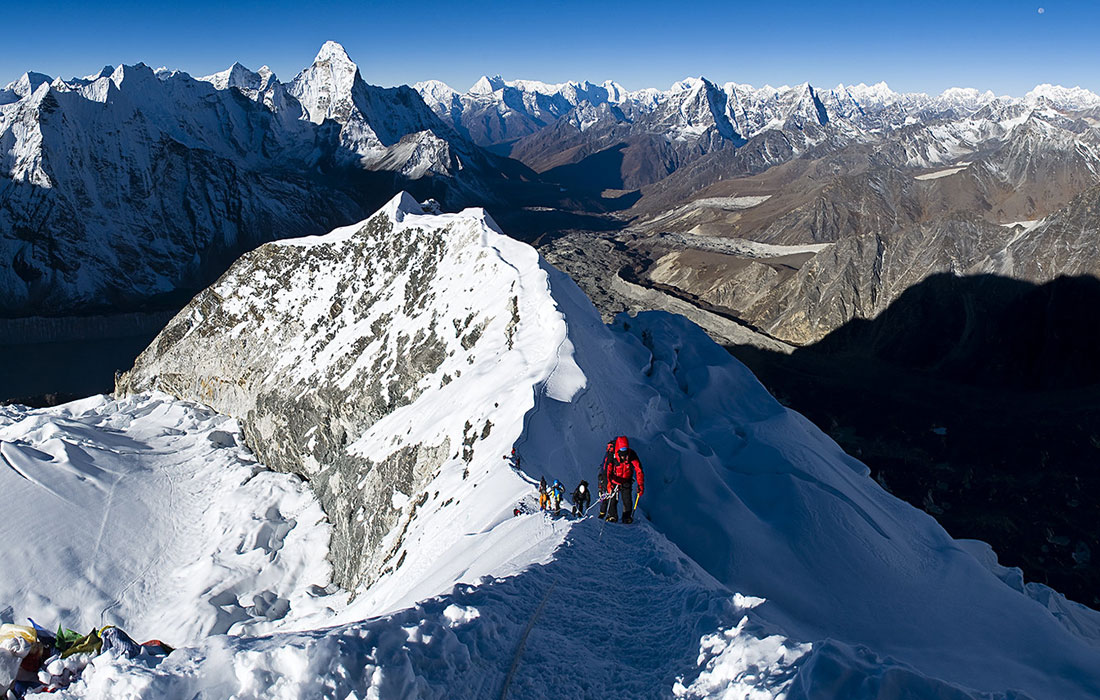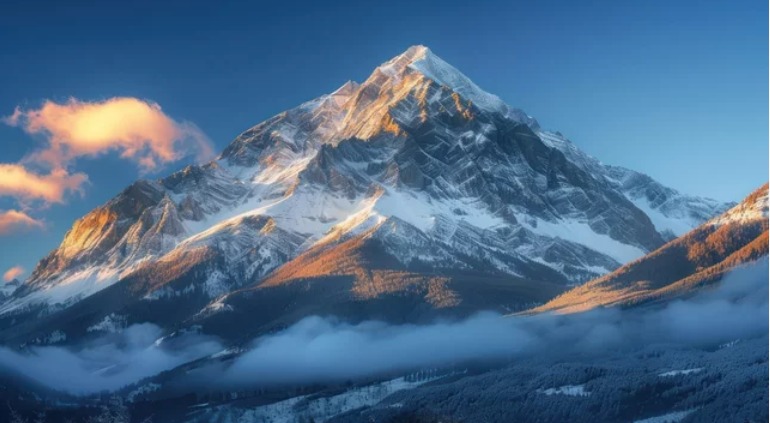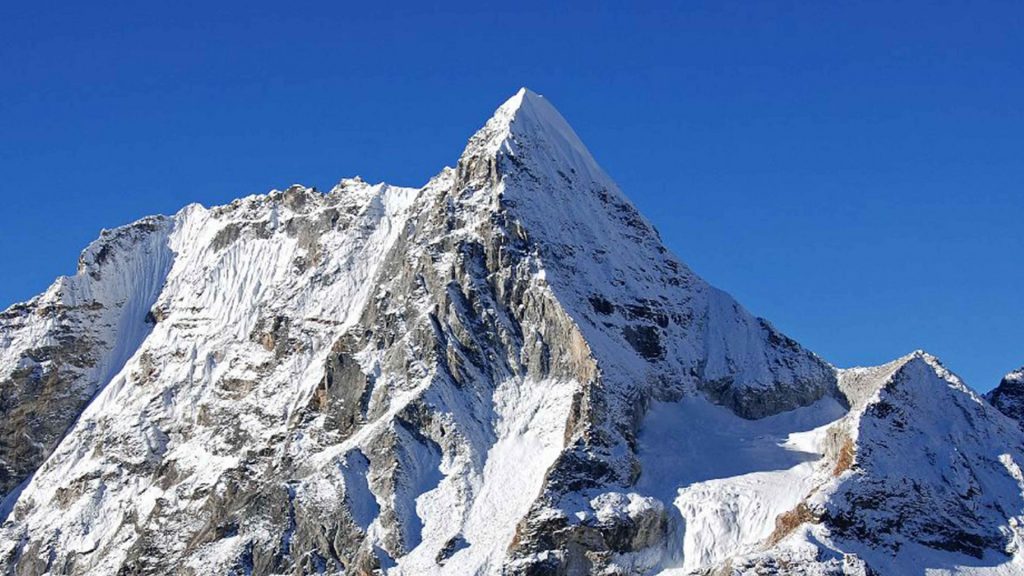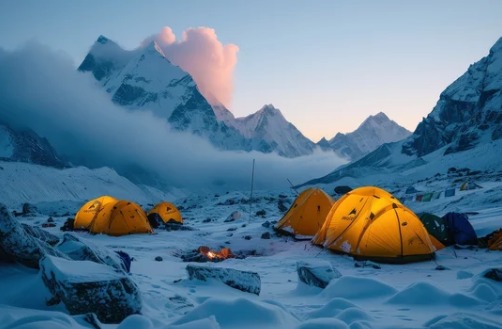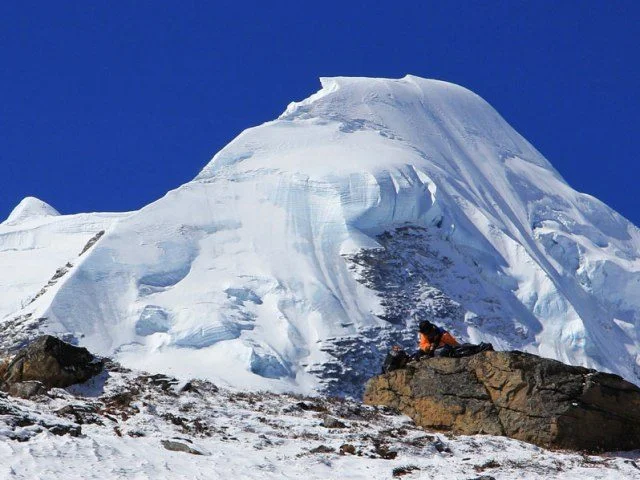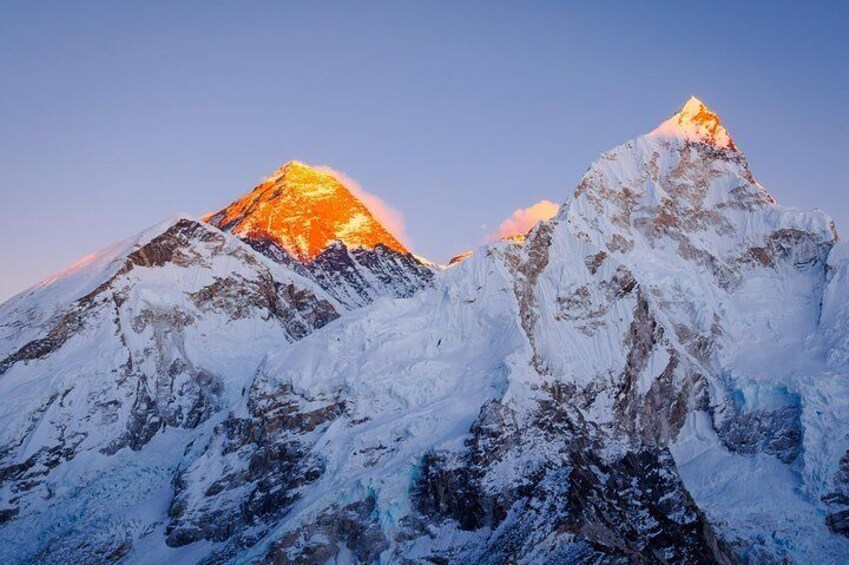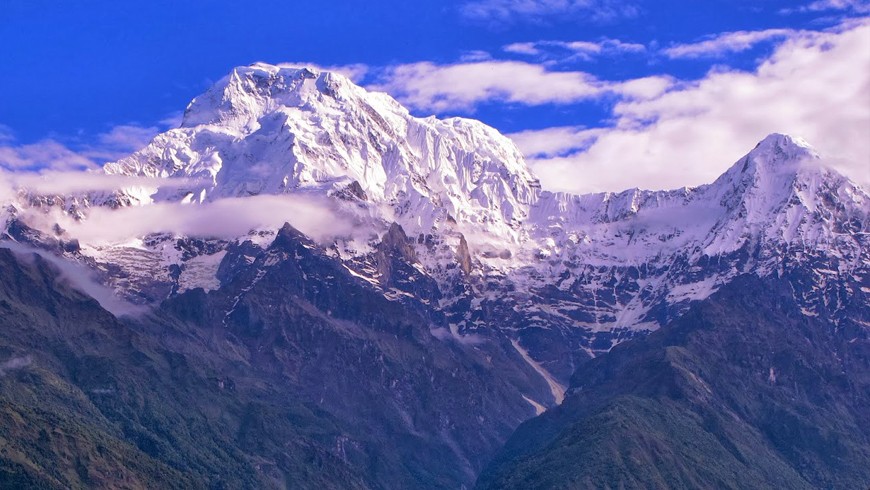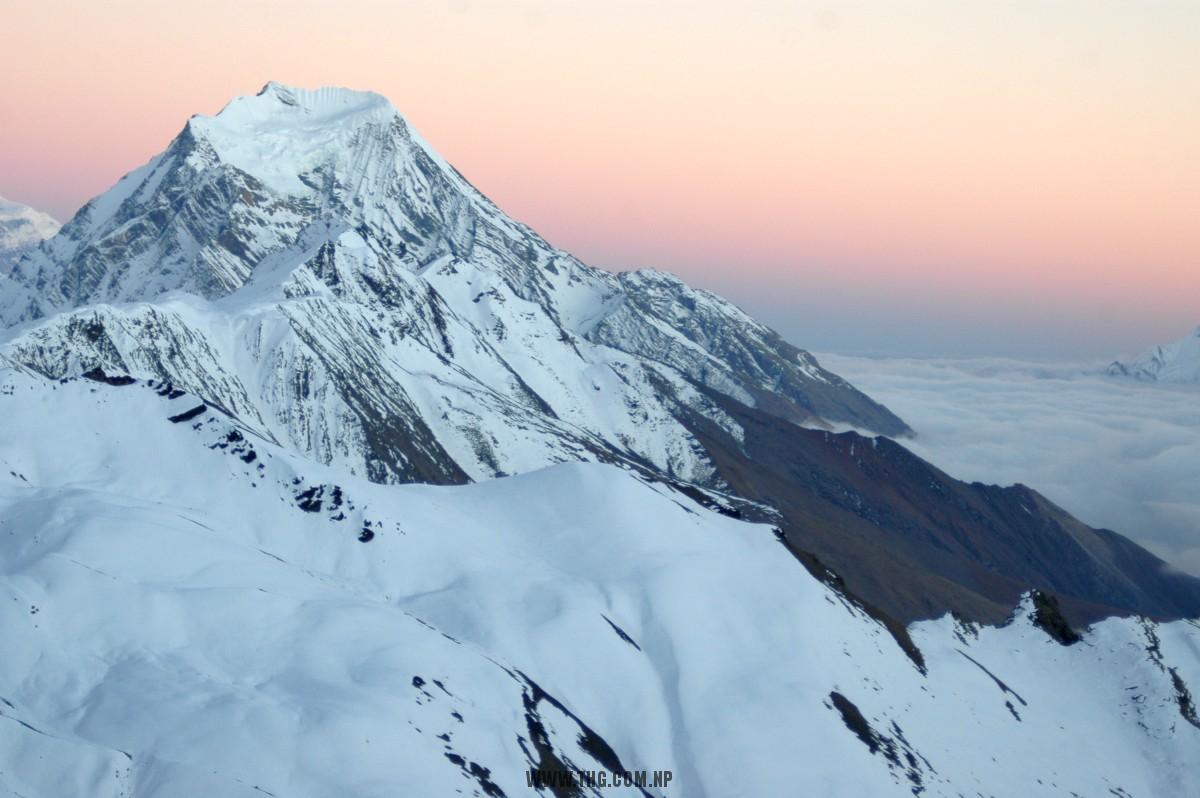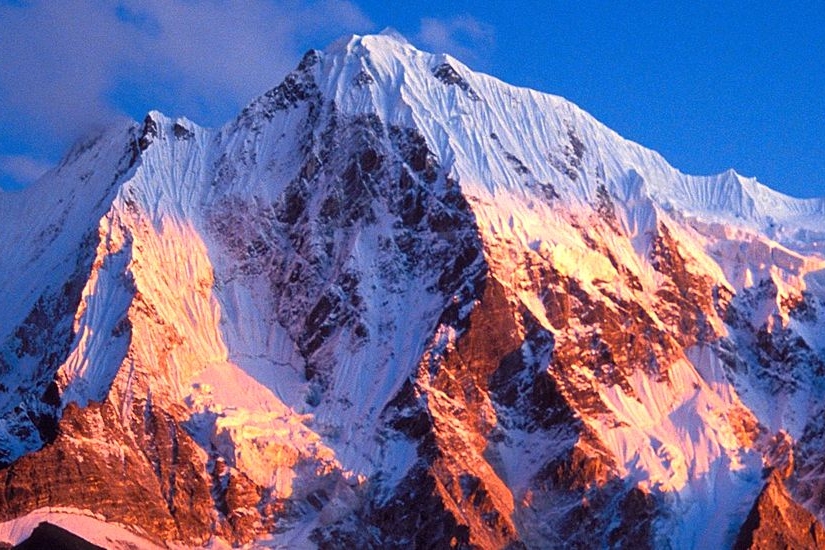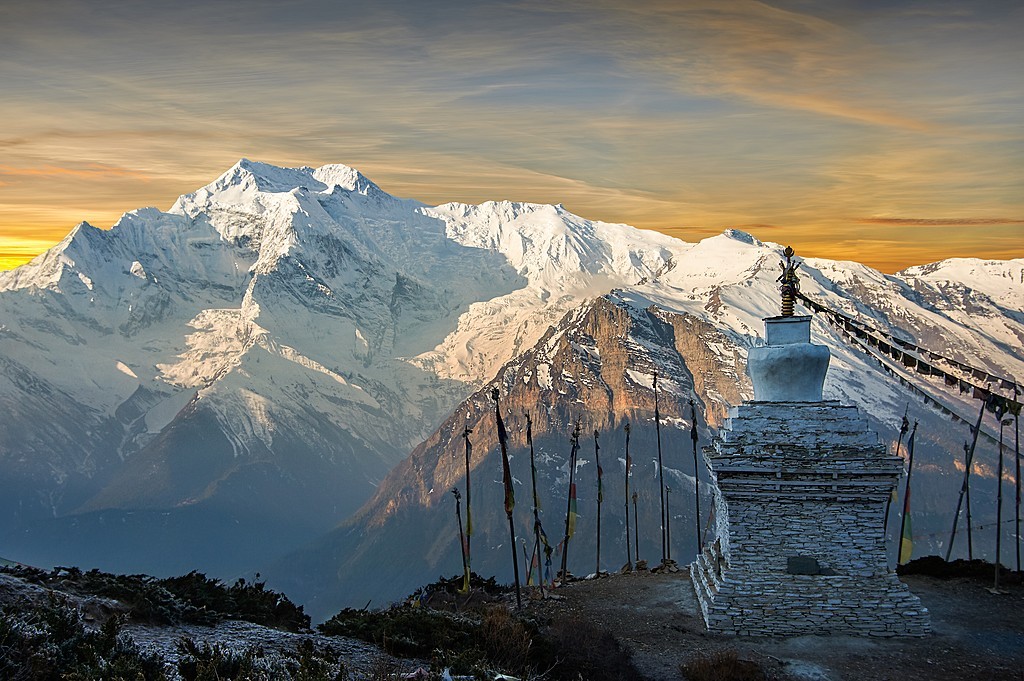Trip Facts
Highlights
- Conquer Island Peak (6,189m /20,305ft) – the most popular peak climbing of the Everest Region
- Walkthrough Nepal’s top trekking destination – Everest Base Camp
- Fly between giant mountains – heart-pounding moments landing at Lukla airport
- 10+ years’ experience local guide and porters
- Acute Altitude Sickness friendly itinerary
- Sherpa Villages, Culture, Tradition, and Hospitality
- Highest Altitude situated Monastery (Gompa), Meet Buddhist Lama, Monks & Nuns, Tibetan Buddhism, and Practices
- Closure view of Himalayas en-route to Everest Base Camp and return
- Step on the Highest Base Camp in the world – Everest Base Camps
- Magnificent view of Mount Everest Sunrise and Sunset from Kala Patthar
- o Luxury Lodges and hygiene meals Trek in the habitat of rare and endangered species – snow leopard, red panda, Himalayan black dear, musk deer, and Himalayan wolves.
Overview
Locally known as Imja Tse, Island Peak is a spectacular peak amid the giants of the Himalaya. Tucked away up the Chukkung valley this beautiful mountain does indeed look like an island which is dwarfed on both sides by the stupendous Lhotse/Nuptse South Wall to the north and Baruntse to the south. The views from the top of this mountain are truly wonderful, and all the more memorable for a spectacular airy ridge climb to the top.
If you have dreamed of climbing a technical 6000 metre Himalayan summit then this famous mountain may answer your wishes. It was actually a training peak used by Edmund Hillary and Sherpa Tenzing in 1953 and the route they discovered is the same one that is used today. In fact Island Peak is still a popular training peak for clients attempting Mount Everest because a lot of the skills required – crossing crevasses with ladders, using jumars on a fixed line – are the same.
Itinerary
Upon arrival, an Nomadways Adventure representative will receive you at Tribhuwan International Airport (TIA). Our representative will transfer you to your hotel and will explain you about the trek in brief once you freshen up. You may ask our tour operator & guides for any queries regarding the trek/expedition. Our staff will also assist you with the trek preparation. In the evening, you may enjoy the Kathmandu night around your hotel.
You will meet your trek leader for a briefing about the trek beginning the next day. After the briefing, there will be a short question and answer session about your trip in which you may ask anything regarding the trek. We all finalized our preparation for the trek along with the required equipment. We will introduce you to the team members for the expedition.
Early morning we fly from Kathmandu to Lukla: a panoramic view of Nepal’s eastern part of the Himalayas. Langtang, Gauri Shanker, Numbre, Manglungtse, and finally, Everest appear during this flight of 45 minutes. The trek begins with a short descent to the valley of the Dudh Kosi. From the village of Chaunrikarka (2621 m), the path heads north through the Sherpa villages, where they grow wheat, potatoes, corn, and vegetables. We cross the Dudh Kosi on a suspended wooden bridge.
The day begins with a walk along the Dudh Kosi. The path rises gently. On several occasions, we cross the river, pass the village Jorsale (2805 m) then begin a steep ascent to Namche Bazaar. Half an hour later, we can see Everest. We arrive at Namche early to learn about the famous Sherpa village and its inhabitants. Some shops and traders sell Tibetan jewelry and handicrafts from Tibet. Each week is an important market in Namche where farmers sell their crops around wheat, maize, millet, etc.
Acclimatization and rest in Namche (3440 m). Visit the Sherpa capital and explore more of the Khumjung Village with a regular walk.
The trek continues along the rushing glacial waters of the Dudh Kosi with magnificent views of the mountains. We spend the night next to the Thyangboche monastery, the spiritual center of the Khumbu region. Inside the monastery are incredibly ornate wall hangings, a 20-foot sculpture of Buddha, and the musical instruments and robes of the Lamas. Luckily, our group will see the Lama perform a ceremony and hear the mystical chanting and music.
We will today slide down through the forest of birch, juniper, fir, and rhododendron at Debuche. Here we only steady way up, but due to the elevation, we have to speed ourselves increasingly through the day. After passing the Imja Khola, the trail heads to Pangboche, where we can see the beautiful mountain of Ama Dablam. Then our route is to climb through unwrapped alpine hillsides before another crossing of the Imja Khola and reach Dingboche.
Today, we leave Pheriche, and the trail goes up to the drain of the Khumbu. Then after an hour, the path mounts up to the Khumbu Glacier. Almost half of the climb to the moraine is Dughla. Moving ahead from Dughla, the trail keeps ascending steeply to the crest of the moraine. The path now mthe flatthe west part of the moraine befobeforeing at Lobuche.
After an early morning start, we ascend Kala Pattar (18,450 feet) and enjoy famous views of the Himalayas without having to climb Everest! That evening we camp beneath Kala Pattar at Gorak Shep. In the event of bad weather, we have the opportunity for a second chance to climb Kala Pattar. Today we will also continue our trek to Everest Base Camp, located at the foot of the Khumbu Icefall. We’ll spend the day at Everest Base Camp, allowing you to meet the climbers and thoroughly explore the area. Overnight in tents at the base camp.
We will walk to Kala Patthar; we will have a vertical climb which will allow us to get beautiful views of Everest Peak. We can observe the peaks of Pumori (7,145m), Khumbutse (6,623m), Lingtren (6,697m), and more which divides Nepal from Tibet, and just above the Lho La pass, we can see the giant face of Changtse (7,750m). We then move back to Lobuche.
From Lobuche, today we will walk to the Chhukhung Valley, which is situated unswervingly lower than a massive rock wall that connects Nuptse with Lhotse. From here, you will have magnificent views of Amadablam (6856 m.), the most photographed peak in Nepal.
We then walk beside the Imja Khola to reach Pareshaya Gyab, a pleasant place nearby a small lake with beautiful views of the Nuptse-Lhotse wall and Lhotse Glacier. Once we set our camp here, you can keep your climbing stuff in order and prepare to climb the peak tomorrow—overnight tented camp.
After nearly 3 hours, the thirteenth day strolls through the tight slopes, and the hard way leads towards the aimed destination. On achieving high camp, the tents will be set along entire gears and apparatuses will be re-examined, and on the last hour, helpful techniques are reminded for the next day’s climb. If possible, we develop short ice/rock climbing nearby high camp, pack up entire tasks and stress along we snooze soon to wake up at the young hour of the next day.
This day is the time to achieve the desired destination, which makes you feel a sense of achievement. We develop our climb high as early as possible by utilizing and following the methods instructed by the climbing professionals. We support steps, crevasses, and sears to face a lengthy 40–45-degree slope climb, which finally takes us to the summit. 360° stunning view from high altitude makes your moment. After collecting full climbing gear and belongings, we walk down to Chhukung to stay overnight.
An extra day is always good if you cannot submit the Peak on schedule due to bad weather or other reasons. If the trip goes smoothly, we can reduce this day.
After your dream comes true, walking down to Namche Bazaar would be satisfying. Passing Dingboche, Pangboche, and Tengboche villages, our returning journey will be fanciful by the shadows and sparks of mountains. We will have a night of rest at Namche Bazaar.
Trek from Namche Bazaar to Lukla, where we spend the night at a Lodge.
We will wake up early in the morning and prepare for our plane’s entrance for returning to Kathmandu. Then, we will transfer back to our hotel. Remaining day to explore Kathmandu, overnight in hotel.
On the last day pinpointing your flight time, you can shop for some unique presents for your unique one. Our solace private vehicle will move you towards the airplane terminal (Tribhuwan International Airport), featuring your board-up time along with our agents and well-wishers, and farewell you with deference for your other safe flight.
Cost Includes:
- All airport transfers
- All airport taxes
- Luxury Hotel in Kathmandu for two nights with breakfast
- An experienced English-speaking Govt. registered trekking guide and local porters to carry luggage (2 trekkers: 1 porter)
- Full meals: Breakfast, Lunch & Dinner of your choice
- Supplementary snacks: energy bar and cookies
- Seasonal fresh fruits desert every day
- Unlimited Chlorine treated Safe Drinking water
- Accommodation: Lodge
- A comprehensive First Aid kit
- Oxi-meter: To check heart rating and oxygen saturation to Everest Base Camp and return
- All government and local taxes
- Trekking equipment: down-filled sleeping bag, walking poles, and duffel bag
- Souvenir: Trekking Route map printed T-Shirts
Cost Excludes:
- Lunch and dinner in Kathmandu
- Hot and bottled drinks
- Electronic device re-charge Wi-Fi
- Hot shower
- Travel insurance and medical evacuation
- Tipping
Equipment
Trekking requires careful selection of gear to ensure comfort, safety, and efficiency on the trail. Depending on the conditions (terrain, weather, duration), the equipment you need may vary, but here’s a comprehensive list of essential trekking gear:
- Backpack
- Capacity: Typically, for a multi-day trek, a 40-60L pack is ideal.
- Fit: Adjustable straps for shoulder, chest, and hip.
- Features: Hydration system compatibility, side pockets for easy access, and a rain cover.
- Footwear
- Trekking Boots: Look for boots with good ankle support, durable soles (Vibram is a popular choice), and waterproof features.
- Trail Shoes: For lighter treks or well-maintained paths, trail shoes may suffice.
- Sock Layers: Merino wool socks or synthetic socks that wick moisture and reduce blisters. Avoid cotton.
- Gaiters: To keep debris, mud, and snow out of your boots.
- Clothing (Layering System)
- Base Layer: Moisture-wicking (synthetic or merino wool) long-sleeve top and bottoms.
- Mid Layer: Insulating layer, such as a fleece or down jacket.
- Outer Layer (Shell): Waterproof, windproof jacket and pants. Gore-Tex or similar fabrics are excellent choices.
- Trekking Pants: Convertible pants (with zippers for shorts) can be useful.
- Trekking Shirt: Lightweight, moisture-wicking, and quick-drying.
- Gloves: Lightweight gloves for warmth, plus an additional heavier pair if trekking in cold climates.
- Hat/Cap: A sunhat or beanie depending on the weather.
- Neck Gaiter/Buff: For sun protection, warmth, or dust.
- Sleeping Gear
- Sleeping Bag: Temperature-rated for the conditions you’ll face. Down bags are warmer and lighter but lose effectiveness if wet, while synthetic bags dry quicker.
- Sleeping Pad: Inflatable or foam pads that insulate from the cold ground.
- Tent: Lightweight trekking tents (1-3 person) that suit your conditions. Some options include 4-season tents if you're trekking in harsh weather.
- Hydration System
- Water Bottles: Collapsible or hard plastic bottles (ensure they’re BPA-free).
- Hydration Reservoir: Camelbak or similar bladder systems for easy access to water.
- Water Purification: A filtration system (e.g., Sawyer, LifeStraw) or chemical tablets to purify water from streams or other sources.
- Food and Cooking
- Stove: Compact gas or alcohol stove for cooking on the trail.
- Cookware: Lightweight pots or pans, often titanium or aluminum.
- Fuel: Compatible fuel for your stove (check for availability in the region you’re trekking).
- Food: Dehydrated meals, energy bars, trail mix, nuts, and fruits. Lightweight, high-calorie, and easy-to-prepare foods are best.
- Navigation Tools
- Map and Compass: Always have a paper map as a backup, even if you use a GPS.
- GPS Device or Smartphone with a Trekking App: Make sure to download offline maps.
- Altimeter Watch (optional): Useful for tracking elevation and route progress.
- Lighting
- Headlamp: Hands-free lighting for night-time use, with extra batteries.
- Flashlight: A backup to your headlamp.
- First Aid Kit
- Include basic supplies: Bandages, antiseptic wipes, blister treatment, pain relievers, and any personal medications.
- Personal Medications: Always bring enough for the whole trip, plus extras in case of delays.
- Sunscreen and Lip Balm: Protect your skin from sun exposure.
- Safety Gear
- Multi-tool/Knife: A good multi-tool (like a Swiss Army Knife or Leatherman) is very useful for repairs and emergencies.
- Whistle: For signaling.
- Emergency Blanket: Lightweight and compact for warmth in case of emergency.
- Firestarter: Matches or a lighter, and waterproof if needed.
- Miscellaneous
- Trekking Poles: Help with balance, reduce strain on knees, and improve traction on uneven terrain.
- Towel: Quick-dry, compact towel.
- Sunglasses: UV protection for your eyes.
- Camera/Smartphone: For documenting the journey, with extra storage or a portable charger.
- Personal Hygiene and Toiletries
- Toilet Paper: Always carry biodegradable toilet paper and a small trowel for digging a "cathole" if there are no facilities.
- Hand Sanitizer: To keep clean without access to water.
- Wet Wipes: For cleaning yourself when there's no shower.
- Biodegradable Soap: If you need to wash, use eco-friendly soap.
- Toothbrush/Toothpaste: Compact travel versions.
- Weather Protection
- Sun Protection: Sunglasses, sunblock, and a wide-brimmed hat for sun protection.
- Rain Gear: A high-quality waterproof jacket, pants, and gaiters, especially if you're trekking in areas with unpredictable weather.
- Cold Weather Gear (if needed): Depending on the trek, you might need additional gear like down jackets, insulated gloves, or even crampons for ice or snow.
- High-altitude Treks: Consider gear for altitude sickness (like Diamox), extra layers for extreme cold, and an oxygen system if necessary.
- Long-distance Treks: You might need additional gear like extra food storage, a larger stove, or a lightweight trekking umbrella.
FAQ's
Island Peak (Imja Tse) is a 6,189-meter (20,305 ft) peak in the Everest region of Nepal. It is a popular trekking peak that provides climbers with stunning views of the Himalayas, including Everest, Lhotse, Nuptse, and Makalu. It's a great choice for beginner climbers aiming to summit their first Himalayan peak.
Yes, proper acclimatization is critical to avoid altitude sickness. The itinerary includes multiple acclimatization days to allow your body to adjust gradually to higher altitudes.
Professional guides and porters. Regular health checks during acclimatization. Availability of first aid, oxygen cylinders, and a portable altitude chamber (PAC). Contingency days for weather or health issues.
